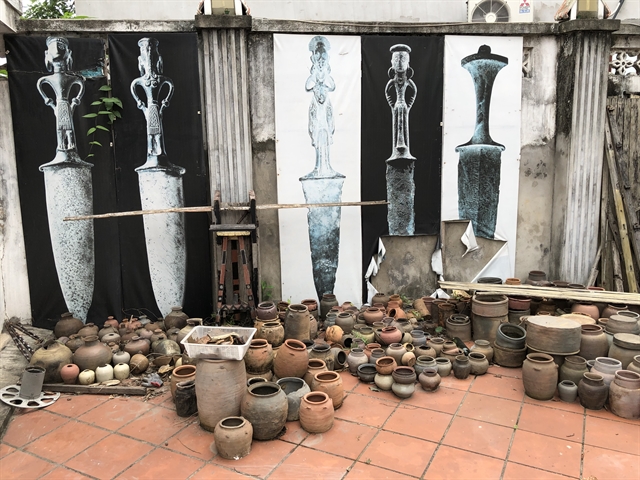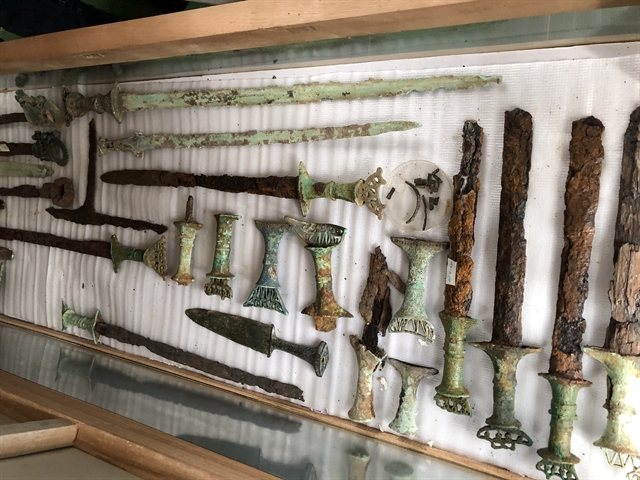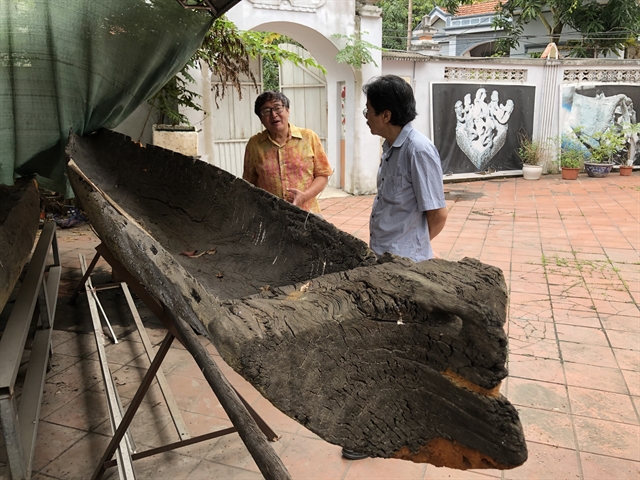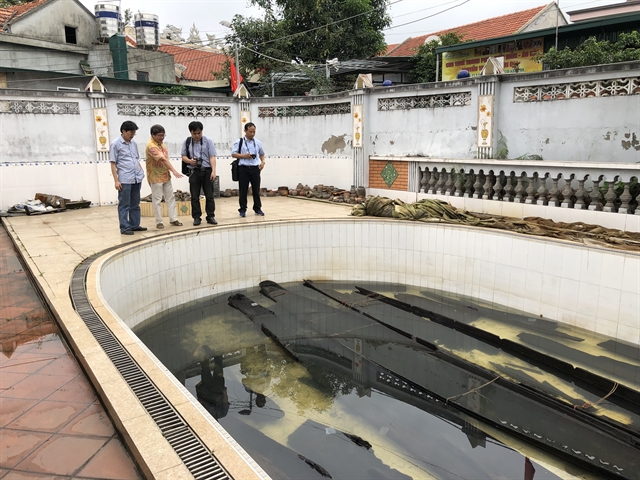 Sunday/Weekend
Sunday/Weekend

On our visit to Phạm Huy Thông Antiques Museum in Quảng Yên Commune, the northern province of Quảng Ninh, the antique boats left the biggest impression on me. The museum is the brainchild of archaeologist Nguyễn Việt, director of the Southeast Asia Prehistoric Research Centre. Việt named the museum after Professor Phạm Huy Thông (1916-1988), who inspired much of his archaeological research.
By Trần Mai Hưởng
On our visit to Phạm Huy Thông Antiques Museum in Quảng Yên Commune, the northern province of Quảng Ninh, the antique boats left the biggest impression on me. The museum is the brainchild of archaeologist Nguyễn Việt, director of the Southeast Asia Prehistoric Research Centre. Việt named the museum after Professor Phạm Huy Thông (1916-1988), who inspired much of his archaeological research.

|
| The museum is home to thousands of ceramic objects. VNS Photos Trần Mai Hưởng |
The museum stores thousands of valuable antiques like ceramics, stone objects, bronze drums and sets of swords dating back to the Hùng Vương era (258-7BC). One of the most interesting parts of the collection is a set of wooden pillars that were installed in the Bạch Đằng River as a trap to destroy the war vessels of Chinese invaders between 938 and 1288.
.jpg)
|
| Bronze drums at the museum. |
There are also 22 ancient wooden boats, which were taken from the bed of the Kinh Thày River in the northern province of Hải Dương between 2016 and 2018.

|
| A collection of metal weapons. |
“We have sent 12 samples of wood from the boats to Australia, Germany and France to determine their ages with the radiocarbon dating method (C14),” Việt told Việt Nam News. “Results show that six boats in the collection date back to the Đông Sơn civilisation (2,000-2,400 years ago); five date back between 800 and 1,200 years; and only one is 400 years old.”

|
| A wooden boat preserved on land at the museum. |
Six of the boats are displayed on land while the 16 others are submerged in water as a natural method of preservation.

|
| Most of the ancient boats are kept underwater at the museum as a natural method of preservation. |
In 2018, Việt teamed up with Australian professor Peter Bellwood to measure each boat. They drew sample designs and called for help from international researchers.
Scientific reports on the boats have been presented at professional workshops both domestically and abroad, and comprehensive articles on the research on Đông Sơn-era boats are being compiled.
“In the next few years, the research centre will preserve and restore these boats,” he said.
Việt’s passion for preserving the country’s unique boats extends beyond ancient artefacts. In 2017, he built a fully functioning sampan with bat-winged sails, a style which was popular in the north of Việt Nam few decades ago. The boat has fallen out of favour and fewer and fewer people these days know how to make them.

|
| The new sampan with bat-winged sails, made by Professor Nguyễn Việt and his colleagues to preserve the out-of-favour style. |
Việt said he and his colleagues had collected more than 400 hours of film and 800 images detailing the techniques and skills needed to make and sail the wooden boat.
“The boat will help preserve the art of making sampans as the final generation of boat makers gets old,” he said.
“I think the boat will aid research and honour the long history of the Vietnamese shipbuilding industry and the seafaring tradition of Vietnamese fishermen.
“My boat with bat-winged sails could be the last of its kind in the country,” he joked. VNS




